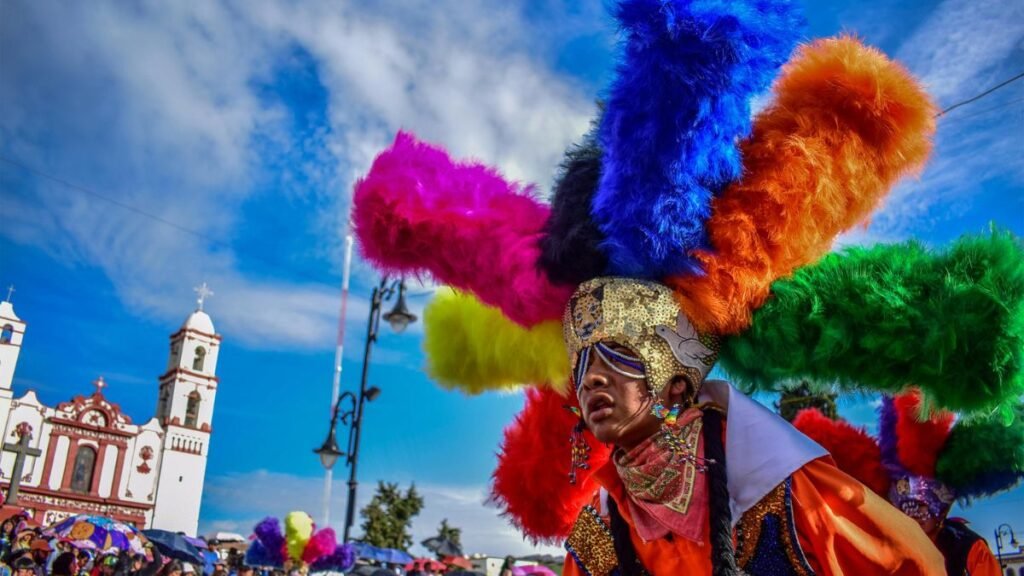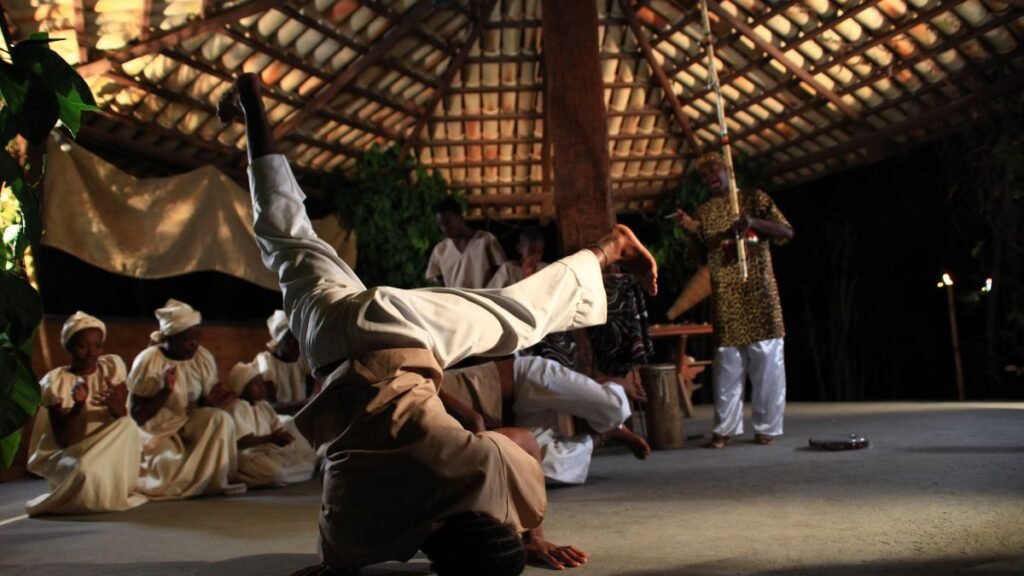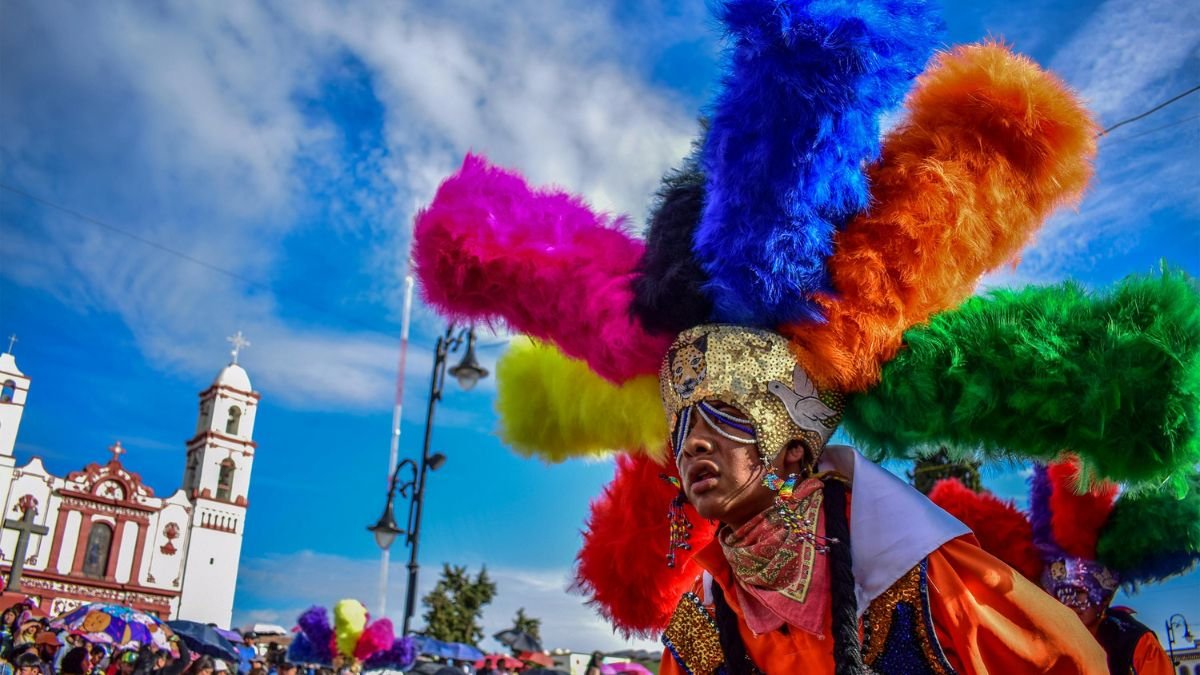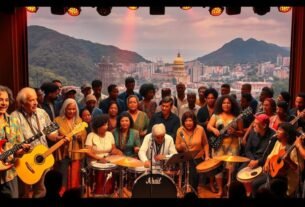Introduction
What makes a country’s culture stand out in a world full of diverse traditions? The answer lies in the vibrant mix of influences that shape its identity. With roots tracing back to African, European, and Indigenous heritage, this nation offers a rich tapestry of traditions and customs.

From lively music to flavorful cuisine, every tradition tells a story. Family values and community spirit shine through in daily life. The world knows this place for its legendary Carnival and breathtaking Amazonian landscapes.
Ready to explore eight unforgettable customs? Let’s dive into the heart of this captivating culture.
Key Takeaways
- A blend of African, European, and Indigenous influences creates unique traditions.
- Food, music, and family play central roles in cultural identity
- Goway’s Brazil Complete itinerary offers deep cultural immersion
- World-famous Carnival showcases the country’s vibrant spirit
- Customs like Feijoada Wednesdays and Capoeira reflect the rich heritage
Introduction to Traditions
Diverse influences create a unique mosaic of customs across different regions. The blend of cultures shapes everything from daily rituals to grand celebrations. Indigenous peoples preserve over 200 languages, while the legacies of European and African cultures are reflected in music and faith.
Three pillars form the foundation: Portuguese colonisers, African enslaved peoples, and native communities. Each region boasts distinct flavours. Bahia’s Afro-Brazilian heritage contrasts with Southern European traditions in the south.
Family gatherings anchor social life. Home-cooked feasts often surpass those found in restaurants, with recipes passed down through generations. Sundays mean feijoada simmering on stoves and laughter filling homes.
| Region | Key Influence | Signature Trait |
|---|---|---|
| North | Indigenous | Amazonian folklore |
| Northeast | African | Capoeira, acarajé |
| Southeast | European | Bossa nova, urban festivals |
| South | German/Italian | Churrasco, wine culture |
Music transcends borders. Samba shares the stage with bossa nova’s jazz undertones and sertanejo’s country twang. In Salvador, axé rhythms pulse through crowded streets.
New Year’s Eve reveals another layer. Millions dress in white, offering flowers to Iemanjá, the goddess of the sea. This ritual blends Catholic devotion with Afro-Brazilian spirituality, a testament to the harmony between the two.
Traditions: A Celebration of Diversity
Every region tells a different story through its customs and flavours. From the Amazon’s Indigenous rituals to São Paulo’s immigrant enclaves, cultural identity shifts with the landscape. This diversity reflects centuries of blending—African rhythms, European colonisers, and native resilience.
The Roots of Cultural Blend
Indigenous influences linger in everyday language. Words like abacaxi (pineapple) and mandioca (cassava) stem from Tupí-Guaraní. Yet, Portuguese remains dominant, a testament to colonial history.
Urban centres like São Paulo buzz with global energy. Japanese-Brazilian fusion restaurants sit beside Syrian bakeries. Meanwhile, Northeastern fishing villages preserve Afro-Brazilian traditions, where capoeira circles form on sandy shores.
How Geography Shapes Regional Customs
In 2025, cultural shifts accelerate. Chinese automaker BYD’s expansion contrasts with Ford’s decline, symbolising the emergence of new economic influences. Yet, communities resist homogenization; Bahia’s acarajé vendors fry bean cakes as their ancestors did.
Paraná’s barreado, a slow-cooked beef stew, mirrors the south’s European roots. These dishes aren’t just meals; they’re edible history.
| Region | Signature Dish | Cultural Roots |
|---|---|---|
| Bahia | Acarajé | African (Yoruba) |
| Paraná | Barreado | Portuguese/Azorean |
| Amazonas | Tacacá | Indigenous |
Families gather around these dishes, passing recipes like heirlooms. Whether in a high-rise apartment or a riverside hut, food remains the glue binding generations.
Carnival: The Heartbeat
No event captures the spirit of a culture like its grandest celebration. For five days each year, streets explode with music, costumes, and dance. This isn’t just a party, it’s a way of life.
Rio’s Spectacular Samba Parades
Rio de Janeiro’s Sambadrome, designed by Oscar Niemeyer, hosts the world’s most famous parades. Elite samba schools compete with floats reaching four stories high. Each tells a story through intricate choreography and handmade costumes.
Locals prep year-round for these 72-hour street parties. Neighbourhood blocos (block parties) spill into every corner of the city. Safety tip? Leave valuables at home and wear comfortable shoes.
Salvador’s Afro-Brazilian Axé Celebrations
In Salvador, axé music—a blend of Caribbean rhythms and African beats—powers the festivities. Giant trios elétricos (moving sound trucks) parade through Pelourinho, with crowds dancing for miles.
This style pays homage to Bahia’s Yoruba heritage. Unlike Rio’s structured events, Salvador’s festivals feel like a spontaneous street takeover.
| Aspect | Rio Carnival | Salvador Carnival |
|---|---|---|
| Music | Samba | Axé |
| Duration | 5 days | 6 days |
| Key Feature | Sambadromo parades | Trios elétricos |
| Tourist Draw | 1.5 million visitors | 800,000 visitors |
Mark your calendar: The 2025 Parintins Folklore Festival (June 27–29) offers a quieter alternative with Indigenous storytelling. Yet nothing matches Carnival’s economic punch; over 2 million tourists flood the country annually.
Feijoada Wednesdays: A Culinary Ritual
Wednesdays in this culture mean more than just a midweek break; they’re a celebration of heritage. Families gather around bubbling pots of feijoada, a hearty stew that transforms simple ingredients into a national symbol. This isn’t just food; it’s a way to honour history through every savoury bite.
The History Behind the National Dish
Enslaved Africans created this iconic dish using pork scraps discarded by plantation owners. They combined these with black beans, creating a protein-rich meal that sustained communities. The recipe evolved into today’s complex cuisine, featuring up to 13 types of meat.

Key components reveal its Portuguese roots. Cozido, an Iberian stew, inspired the technique of slow-cooking meats with legumes. Modern versions include:
| Ingredient | Purpose | Cultural Origin |
|---|---|---|
| Carne seca | Salt-cured beef | Portuguese preservation |
| Linguiça | Smoked sausage | Azorean influence |
| Farofa | Toasted cassava | Indigenous staple |
Vegetarian adaptations now thrive, using jackfruit to mimic pulled pork. Even meatless versions keep the soul of the dish alive.
Why Wednesdays? The Tradition Explained
19th-century taverns started serving feijoada midweek to attract workers. The meal’s affordability and heartiness made it perfect for fueling labourers through their toughest days. Today, restaurants like Rio’s Bar do Mineiro still honour this schedule.
The ritual extends beyond the plate. After the meal, locals sip espresso to aid digestion—a custom borrowed from Italian immigrants. This blend of influences shows how global cultures shaped local dishes.
For the best experience, visit these spots:
- Casa da Feijoada (Ipanema): Serves 15 meat varieties
- Bar do Mineiro (Santa Teresa): Famous for its rustic charm
- Aprazível: Offers panoramic views with vegan options
Every Wednesday, this meal turns kitchens into time machines. From a plantation survival tactic to a family tradition, feijoada’s journey mirrors the nation’s resilience.
Samba Schools: More Than Just Dance
Samba schools transform lives long before the Carnival spotlight shines on them. These organisations serve as community hubs in Rio’s neighbourhoods, offering far more than parade preparation. Their social programs create opportunities where few exist.
The Social Fabric Behind the Sequins
Mangueira and Portela, two legendary samba schools, offer free music and dance classes to low-income youth. These programs keep children engaged after school while preserving cultural heritage. Many professional dancers attribute their careers to these initiatives.
The scoring system at Carnival reflects this cultural depth. Judges evaluate:
- Enredo: How well does the theme tell a story
- Bateria: Rhythm, precision, and energy
- Costumes: Creativity and craftsmanship
From Sketchbook to Sambadrome
Famous designers like Rosa Magalhães spend eight months creating parade concepts. Top schools invest over $4 million annually in materials alone. Beads arrive by the ton, and feathers by the thousands.
Off-season fundraising events keep operations running. These include:
| Event Type | Purpose | Attendance |
|---|---|---|
| Bailes | Dance parties | 500-2,000 people |
| Workshops | Skill development | 50-100 students |
| Charity Auctions | Costume sales | Local collectors |
This year-round commitment makes samba schools the lifeblood of Rio’s culture. They prove that Carnival is just one way these organisations uplift their city.
New Year’s Eve in White: Luck and Waves
As the clock strikes midnight, beaches transform into seas of white, a stunning visual tribute to hope and renewal. Coastal cities host some of the planet’s most vibrant celebrations, blending Afro-Brazilian religion with contemporary party style. This unique way of ringing in the new year draws over three million revellers nationwide.

Iemanjá Offerings: Honouring the Sea Goddess
February 2nd marks the 2025 festival of Iemanjá, when devotees float gifts to the Yoruba sea deity. Traditional offerings include:
- White roses symbolise purity
- Small mirrors for self-reflection
- Jasmine perfumes to please the goddess
In Salvador, decorated boats carry these presents beyond the waves. The ritual originates from Candomblé, an Afro-Brazilian faith that combines West African beliefs with Catholic influences.
| Location | Celebration Style | Attendance |
|---|---|---|
| Copacabana Beach | Mass fireworks display | 2M+ |
| Salvador | Boat procession | 800K |
| Florianópolis | Family gatherings | 300K |
The Symbolism of Colours in Celebrations
While white dominates for peace, other hues carry special meanings in this culture:
- Gold: Wealth and prosperity
- Red: Passion and romance
- Blue: Health and tranquillity
These colour codes vary by region, reflecting local traditions. In Rio, vendors sell entire outfits in specific shades to match personal goals for the new year.
Safety tips for beach festivals:
- Arrive early to secure space
- Use waterproof cases for phones
- Designate meeting points in crowds
- Avoid bringing valuables
From spiritual ceremonies to joyous parties, these days showcase how ancient customs thrive in modern celebrations.
Churrasco Culture: Meat, Music, and Mingling
Fire-kissed meats and lively gatherings define a culinary tradition that goes beyond mere cooking. This way of bringing people together turns meals into celebrations, blending rich flavours with warm hospitality.
The Art of the Barbecue
Southern Brazil’s gaúcho heritage perfected the food techniques now loved worldwide. Skewers of picanha (top sirloin cap) and cupim (hump cut) sizzle over open flames. The secret? Coarse salt and precise timing.
Essential sides complete the experience:
- Farofa: Toasted cassava flour adds crunch
- Vinaigrette: Tomato-onion relish cuts the richness
- Polenta: Creamy cornmeal balances smoky flavours
How Churrascarias Became Global Phenomena
Rodízio-style restaurants, such as Fogo de Chão, now operate in over 50 countries. Their success stems from a unique service model that not only caters to diverse palates but also celebrates the rich cultural heritage of barbecue:
| Aspect | Home Churrasco | Rodízio Restaurant |
| Meat Selection | 3-5 cuts | 15+ varieties |
| Service Style | Self-serve | Continuous tables |
| Atmosphere | Casual | Theatrical |
Modern chefs address sustainability concerns by incorporating local ingredients and environmentally friendly practices. Many now source from regenerative farms, ensuring that the tradition of churrasco not only thrives but also respects the planet. This cuisine continues to win hearts, perfectly charred bite at a time, as it brings together people from all walks of life, creating a communal dining experience that transcends cultural boundaries.
Capoeira: The Dance of Resistance
A martial art disguised as dance tells a story of survival and strength. Born from oppression, its fluid movements conceal combat techniques developed by enslaved Africans. Today, it thrives as a global symbol of cultural resistance.
From Slave Quarters to UNESCO Heritage
In the 16th century, slaves crafted Capoeira as a covert fighting style under Portuguese rule. They masked training with music and acrobatics, fooling the overseers. This ingenuity preserved a history of defiance.
Mestre Bimba revolutionised the practice in 1932 by opening the first academy in Salvador. His Luta Regional Bahia style blended traditional moves with systematic training. In 2014, UNESCO designated Capoeira as an Intangible Cultural Heritage, thereby cementing its global significance.
Modern Capoeira: Sport and Art Combined
Two main styles dominate today’s culture:
- Angola: Slow, ritualistic, emphasising ancestral roots
- Regional: Faster, incorporating kicks from other martial arts
The berimbau, a single-string bow instrument, dictates gameplay speed. Masters like Pastinha and João Grande preserved these traditions while adapting to modern times.
Beyond its performance benefits, it has evolved into a training sport for MMA fighters and a therapeutic art in youth programs. From Rio’s favelas to New York studios, this living way of expression continues to evolve.
Football Fervour: A Nation’s Passion
The roar of the crowd echoes through stadiums, a testament to a nation’s undying love for the beautiful game. Football isn’t just a sport here; it’s a way of life that unites people across social divides. From professional leagues to beachside kickabouts, the game pulses through the country’s cultural heartbeat.
Flamengo vs. Corinthians: The Derby That Stops a Nation
When these two titans clash, normal life comes to a standstill. The rivalry between Rio’s Flamengo and São Paulo’s Corinthians divides households yet strengthens national football culture. Legendary players like Neymar (Santos FC) and Marta (Orlando Pride) emerged from this competitive ecosystem.
The 78,838-seat Maracanã Stadium becomes a pressure cooker during these matches. Fan groups called torcidas organizadas create breathtaking displays:
- Giant banners covering entire seating sections
- Coordinated chants lasting 90+ minutes
- Pyrotechnic shows light up the night matches
How Football Builds Bridges
Beyond rivalries, the sport creates unexpected connections. The 2014 World Cup left lasting infrastructure improvements, including modernised stadiums now used for community events. Local clubs often serve as youth centres offering:
| Program | Benefit | Participation |
|---|---|---|
| After-school training | Keeps kids engaged | 300,000+ annually |
| Nutrition workshops | Promotes healthy habits | 5,000 schools |
| Tournament series | Identifies new talent | All 26 states |
Match days become culinary events too. Vendors sell crispy pastel (fried pastry) and ice-cold chopp (draft beer) to roaring crowds. For the 2025 Libertadores Cup, security measures ensure safe enjoyment:
- Purchase tickets through official vendors only
- Arrive early to avoid gate congestion
- Use team-colored metro cars for easy navigation
- Store valuables in hotel safes
From favela pitches to world-class stadiums, football remains the thread weaving together diverse communities. It’s not just a game; it’s the country’s shared language of passion.
Conclusion: The Living Spirit of Traditions
The heartbeat of a country echoes through its vibrant customs. From Carnival’s sequins to capoeira’s grace, each tradition reflects a living culture shaped by resilience. These rituals aren’t relics; they evolve, blending history with modern joy.
For deeper immersion, stay with local families or join world-class events like Rio’s New Year’s Eve. Goway’s curated trips, including stays at the Copacabana Palace, offer authentic glimpses into daily life in Brazil. In 2025, don’t miss the opening of the Pupy Elephant Sanctuary, a testament to the people’s innovative spirit.
Ready to experience this way of celebration firsthand? Pack your curiosity and dive into a world where every meal, dance, and festival tells a story. The adventure begins where the map ends. Learn more about Diversity.
FAQ
What makes Carnival in Rio de Janeiro unique?
The samba parades in Rio are unmatched in scale and energy. Schools compete with elaborate floats, costumes, and choreography, drawing millions to the Sambadrome.
Why is feijoada traditionally eaten on Wednesdays?
This national dish, featuring black beans and pork, has its roots in the culinary traditions of enslaved Africans. Wednesdays became the day to enjoy it as a midweek celebration of heritage.
How do samba schools impact local communities?
Escolas de Samba foster unity by providing arts education and social programs. Members spend months preparing for Carnival, strengthening bonds in favelas.
What’s the significance of wearing white on New Year’s Eve?
White symbolises peace and purity. Brazilians also toss flowers into the ocean to honour Iemanjá, the Afro-Brazilian sea goddess, in the hope of receiving blessings.
What sets Brazilian churrasco apart from other barbecues?
Churrascarias serve slow-roasted meats on skewers, often with farofa and chimichurri. The tradition stems from gaúcho culture in southern regions.
Is capoeira considered a dance or martial art?
This UNESCO-listed practice blends acrobatics, music, and combat. Born in quilombos, it disguised self-defence as dance during colonial oppression.
Why is football so important in culture?
The sport unites all social classes. Legends like Pelé and rivalries like Flamengo vs. Corinthians reflect national pride and identity.
How does geography influence regional traditions?
Coastal areas celebrate Afro-Brazilian roots, while the south favours gaúcho customs. Amazon integrates indigenous rituals into festivals.




